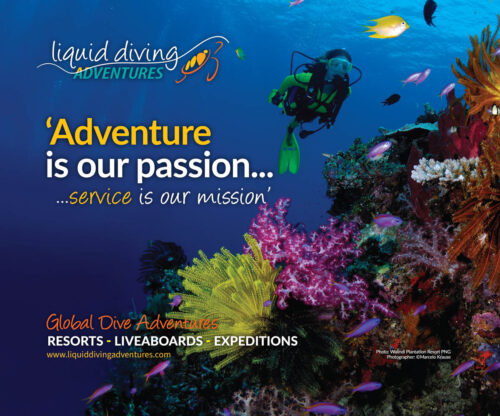There are incredible dive destinations around the world, but sometimes it can be tricky to choose. Do you go for a challenging dive spot that brings all the thrills and rewards? Or opt for a laidback destination with easy dives in warm, calm waters? Being honest about your experience level can be a great place to start.
This article explores ten top dive destinations, catering to a range of experience levels from beginners to seasoned divers. Each location boasts unique underwater landscapes, abundant marine life, and unforgettable dive experiences. Whether you’re seeking the vibrant reefs of the Caribbean or the remote and pristine waters of the Pacific, these destinations promise to help you narrow down your options and create your next perfect dive trip.
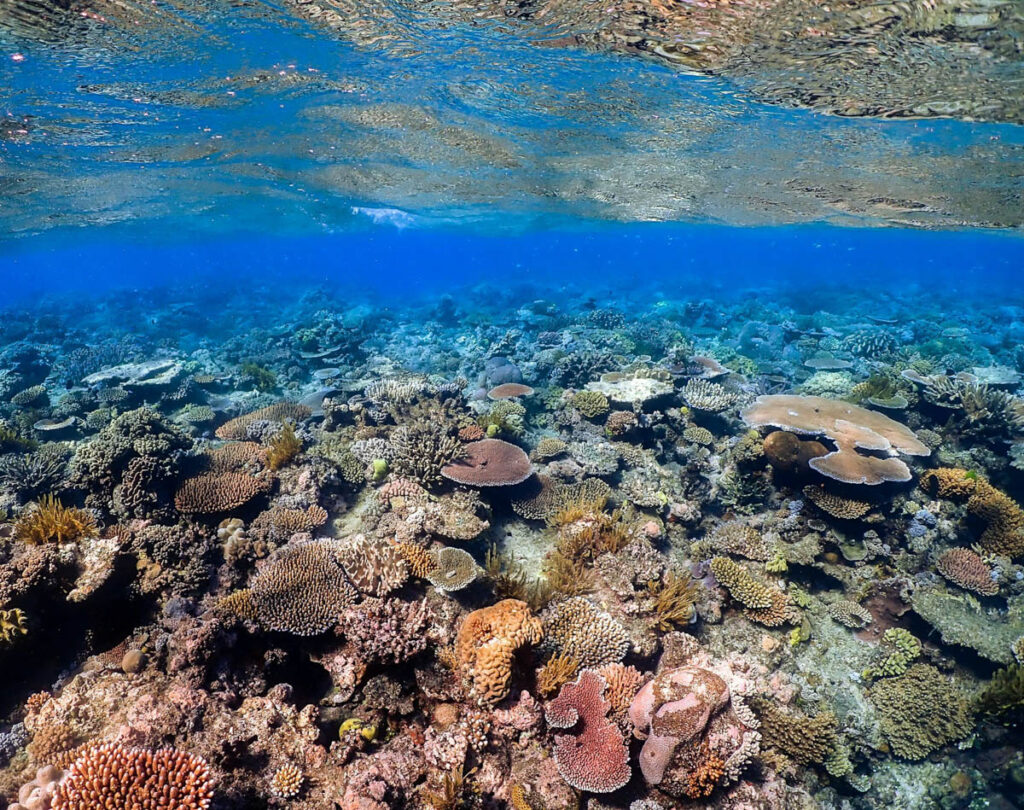
Photo by Kristin Hoel on Unsplash
1. Great Barrier Reef, Australia.
The Great Barrier Reef is the world’s largest coral reef system, stretching over 1,400 miles off the coast of Queensland. It boasts iconic dive sites including the Cod Hole, known for its friendly potato cod, and Osprey Reef, famous for its sharks. There are beautiful colorful corals at the outer reefs, plus manta rays, tens of thousands of sea turtles at Raine Island, and an array of vibrant fish species. During winter, you can even swim with dwarf minke whales.
- Experience level: Beginner.
- Best time to visit: June to October.
- Other activities: Visit the ancient Daintree Rainforest or explore the stunning Whitsunday Islands.

Photo by sutirta budiman on Unsplash
2. Raja Ampat, Indonesia.
Raja Ampat is an archipelago of over 1,500 small islands in West Papua. It is the jewel in the crown of diving in Indonesia and has standout dive sites such as Misool Island, Cape Kri, and the Passage. In Raja Ampat’s rich waters, you can encounter everything from pygmy seahorses to majestic manta rays. The reefs are teeming with life, including rare species like the Raja Ampat Epaulette Shark.
- Experience level: Intermediate to experienced.
- Best time to visit: October to April.
- Other activities: Join a dawn trek to spot birds of paradise, or visit traditional Papuan villages.

Photo by Jakob Owens on Unsplash
3. Blue Hole, Belize.
The Great Blue Hole, a giant marine sinkhole, is one of the most recognizable dive sites in the world. The cave stalactites and collapsed cave formations within the Blue Hole are awe-inspiring. Although descending the Blue Hole itself is the main attraction, the rim of the Blue Hole and nearby sites in the Belize Barrier Reef Reserve System are also exceptional. Nurse sharks, Caribbean reef sharks, and various reef fish are common sightings.
- Experience level needed: Intermediate.
- Best time to visit: April to June.
- Other activities: Visit Belize’s impressive Mayan ruins and pyramids.
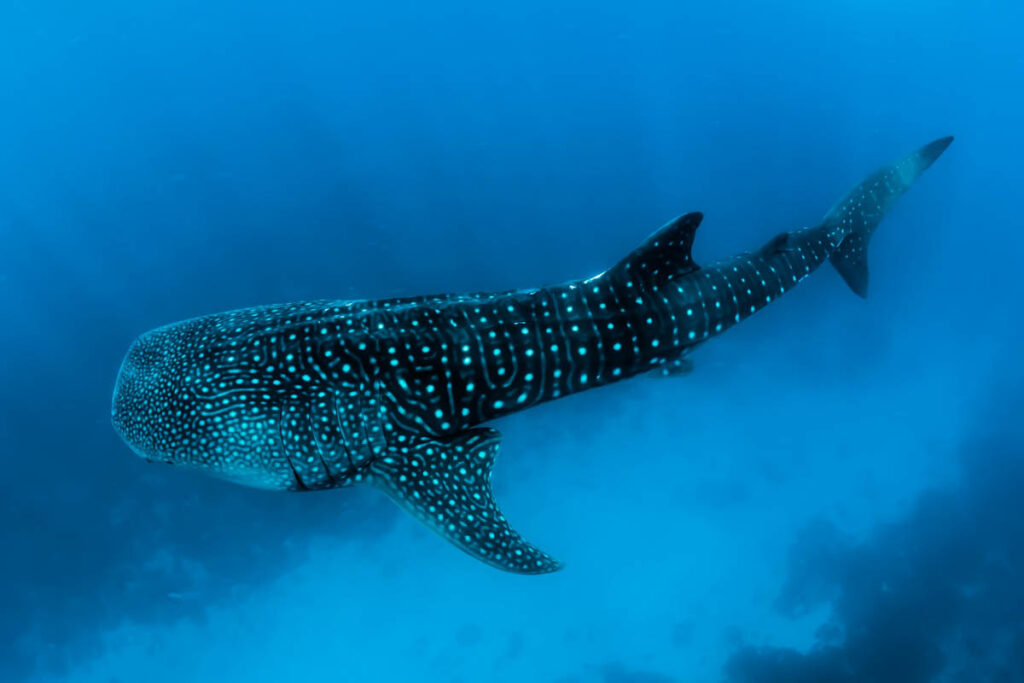
4. Galápagos Islands, Ecuador.
Diving the Galapagos is on the wish lists of many divers; these islands offer some of the most unique dives in the world, with an abundance of marine life not found anywhere else. The nutrient-rich waters attract a wide variety of species and Darwin and Wolf Islands are famous for their large pelagic encounters. Expect to see hammerhead sharks, whale sharks, sea lions, penguins, marine iguanas and more.
- Experience level needed: Intermediate to experienced.
- Best time to visit: June to November (whale sharks) and December to May (hammerheads and mantas).
- Other activities: Visit the Charles Darwin Research Station or walk with Giant Galápagos tortoises.
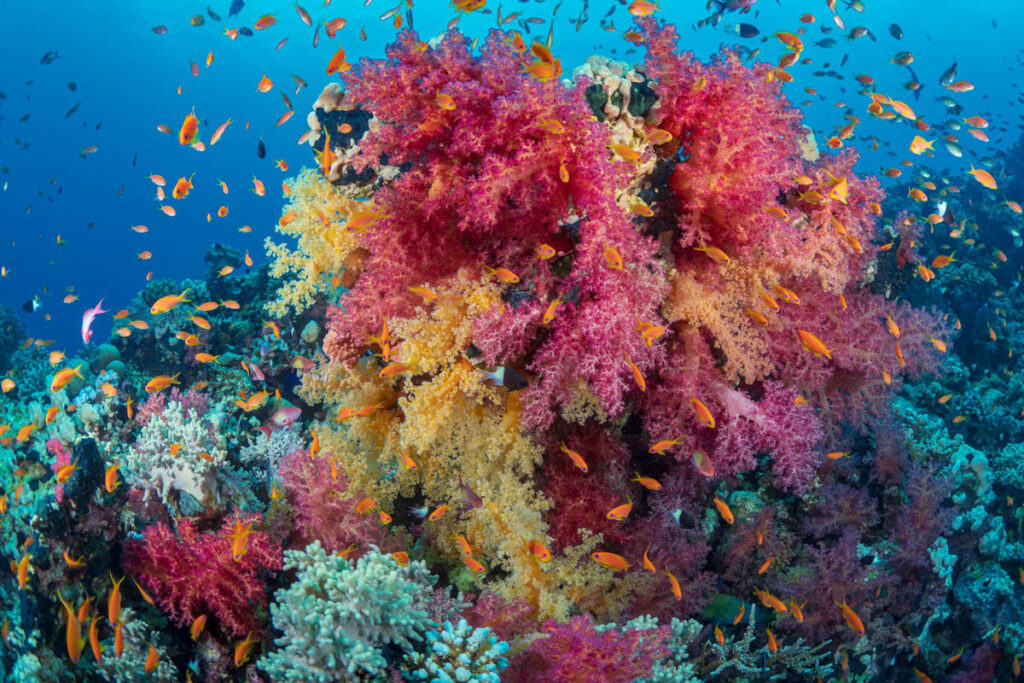
Photo by Pascal van de Vendel on Unsplash
5. Red Sea, Egypt.
The Red Sea is a classic dive destination for European divers, renowned for its crystal-clear waters and vibrant coral reefs. This region offers world-class dive sites accessible to all levels of divers. Sharm El Sheikh, Ras Mohammed National Park, and the Thistlegorm wreck are the best-known places to try diving in Egypt, though the Brothers Islands, Daedalus, and Elphinstone reefs offer incredible diving for more advanced divers. The Red Sea is home to an abundance of marine life, including colorful reef fish, moray eels, sea turtles, vibrant soft and hard corals, and oceanic whitetip sharks.
- Experience level needed: Beginner to experienced.
- Best time to visit: March to May, September to November.
- Other activities: Explore the pyramids in Cairo or go on a desert safari.

Photo by Heidi Bruce on Unsplash
6. Cocos Island, Costa Rica.
Cocos Island, located 340 miles off Costa Rica’s Pacific coast, is a UNESCO World Heritage site known for its abundance of pelagic species. Dirty Rock, Dos Amigos Grande, and Bajo Alcyone are famous dive sites for shark encounters. Schools of hammerhead sharks, whale sharks, mantas, and dolphins are common at this iconic dive destination and the island’s remoteness adds to its allure.
- Experience level needed: Intermediate to experienced.
- Best time to visit: June to November
- Other activities: Trek through the island’s lush rainforests or birdwatch for endemic species.

Photo by Johnny Africa on Unsplash
7. Bonaire, Caribbean Netherlands.
Bonaire is a diver’s paradise, known for its pristine reefs and easy shore diving. The island is surrounded by a marine park, and popular dive sites include 1000 Steps, Salt Pier, and the Hilma Hooker Wreck. If you like easy diving at your own pace, diving in Bonaire could be for you. Simply hire a car and tanks to explore the island’s many shore dives and enjoy warm, clear waters full of life. Expect to see parrotfish, angelfish, and occasional turtles. The clear waters and healthy reefs are perfect for macro photography.
- Experience level needed: Beginner to experienced.
- Best time to visit: Year-round.
- Other activities: Windsurf at Lac Bay or explore the Washington Slagbaai National Park.
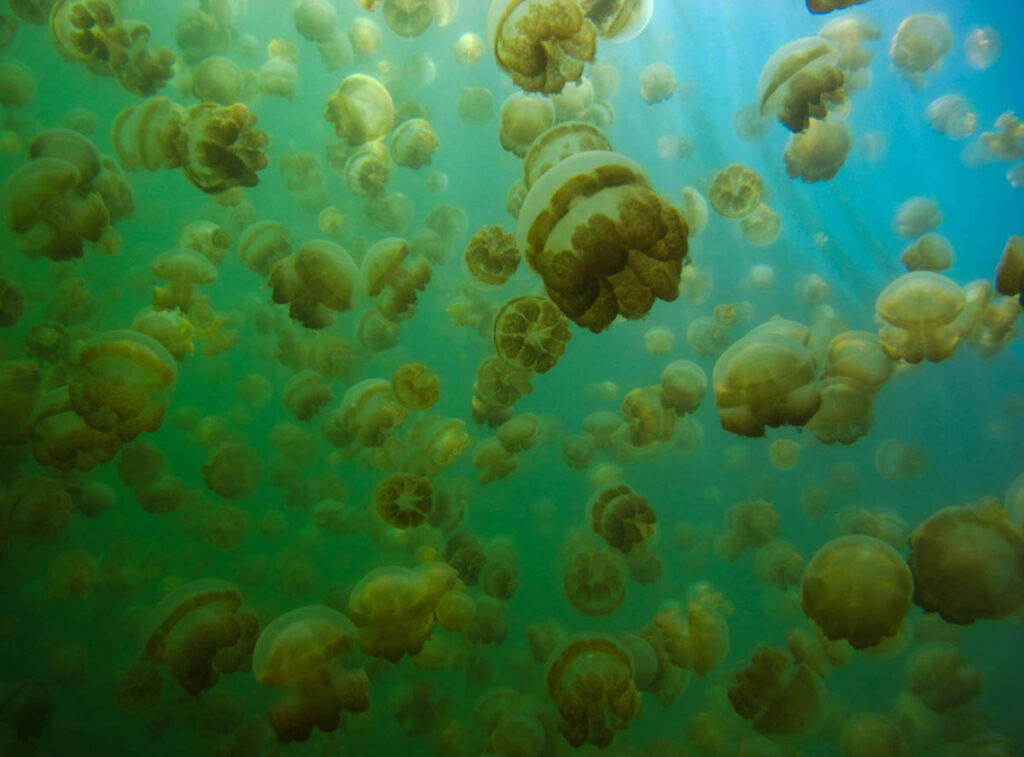
Photo by Sean Robertson on Unsplash
8. Palau, Micronesia.
Palau is a picture-perfect dive destination, known for its dramatic underwater landscapes and diverse marine life. This gorgeous archipelago consists of over 500 islands, with famous dive sites including Blue Corner, German Channel, and Jellyfish Lake. Palau’s waters are home to sharks, manta rays, and an array of reef fish. The currents can be strong, making for thrilling drift dives.
- Experience level needed: Intermediate to experienced.
- Best time to visit: November to April.
- Other activities: Kayak through the Rock Islands or snorkel in Jellyfish Lake.
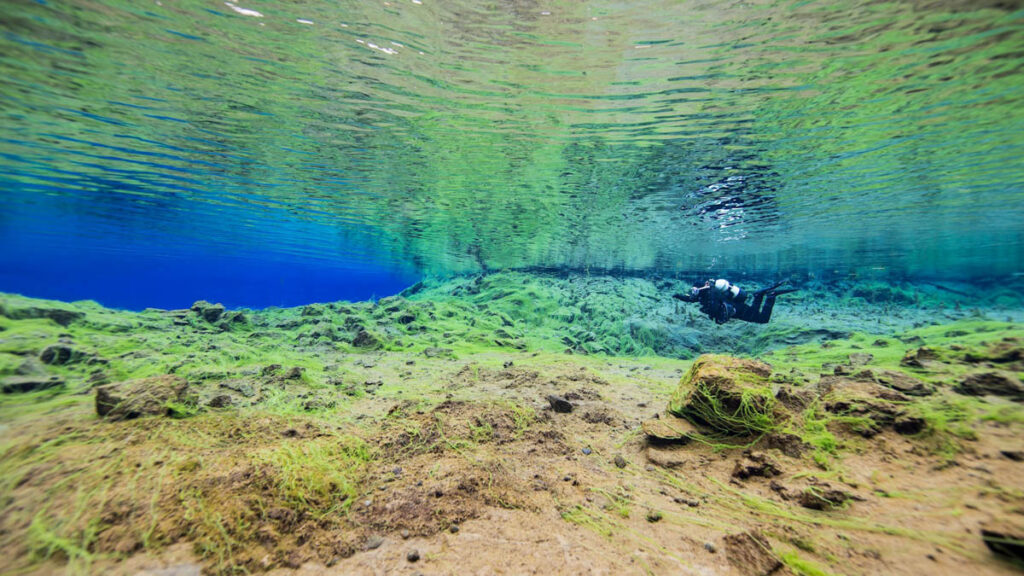
Photo by CHUNGHOI KIM on Unsplash
9. Silfra Fissure, Iceland.
The Silfra Fissure, located in Thingvellir National Park, offers a unique diving experience between two tectonic plates. The fissure is primarily known for its geological formations rather than marine life and the crystal-clear water allows for visibility of over 100 meters (328 feet).
- Experience level needed: Intermediate, with drysuit diving experience.
- Best time to visit: June to August
- Other activities: Explore the natural wonders of the Golden Circle or visit Reykjavik’s cultural sites.
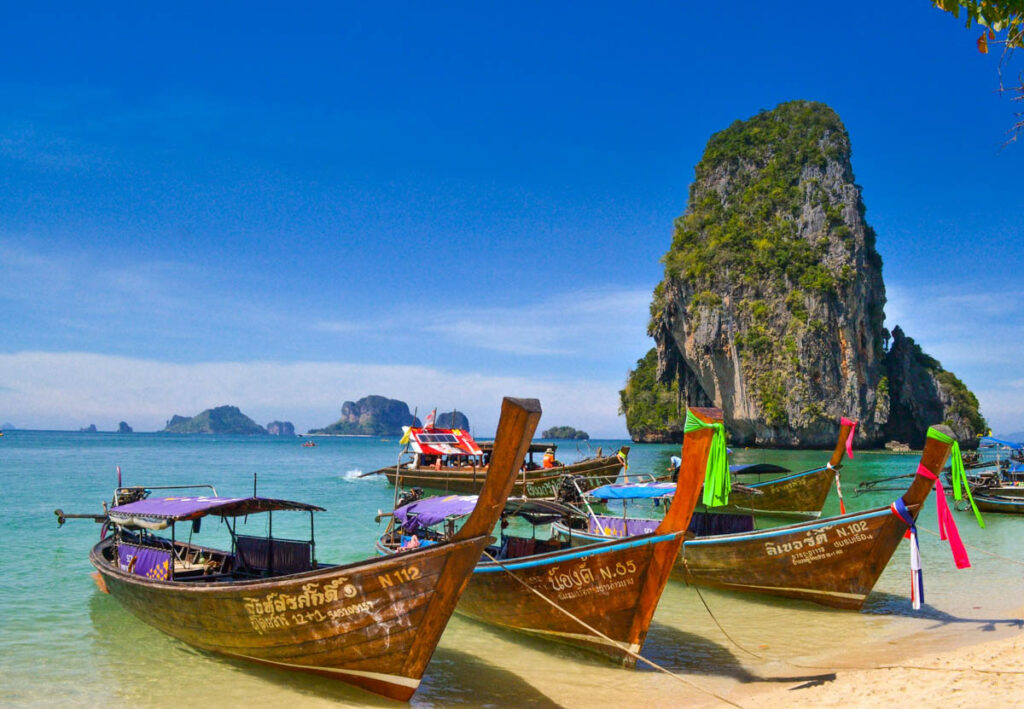
Photo by Sumit Chinchane on Unsplash
10. Similan Islands, Thailand.
The Similan Islands are a group of islands in the Andaman Sea, known for their clear waters and vibrant marine life. The islands form part of a national park, and notable dive sites include Elephant Head Rock, Richelieu Rock, and East of Eden. Encounter whale sharks, manta rays, and an array of colorful reef fish and corals at these famous islands. The reefs are teeming with life and offer something for every diver.
- Experience level needed: Beginner to experienced.
- Best time to visit: November to April.
- Other activities: Relax on the pristine beaches or experience Moken sea gypsy life at Surin.





